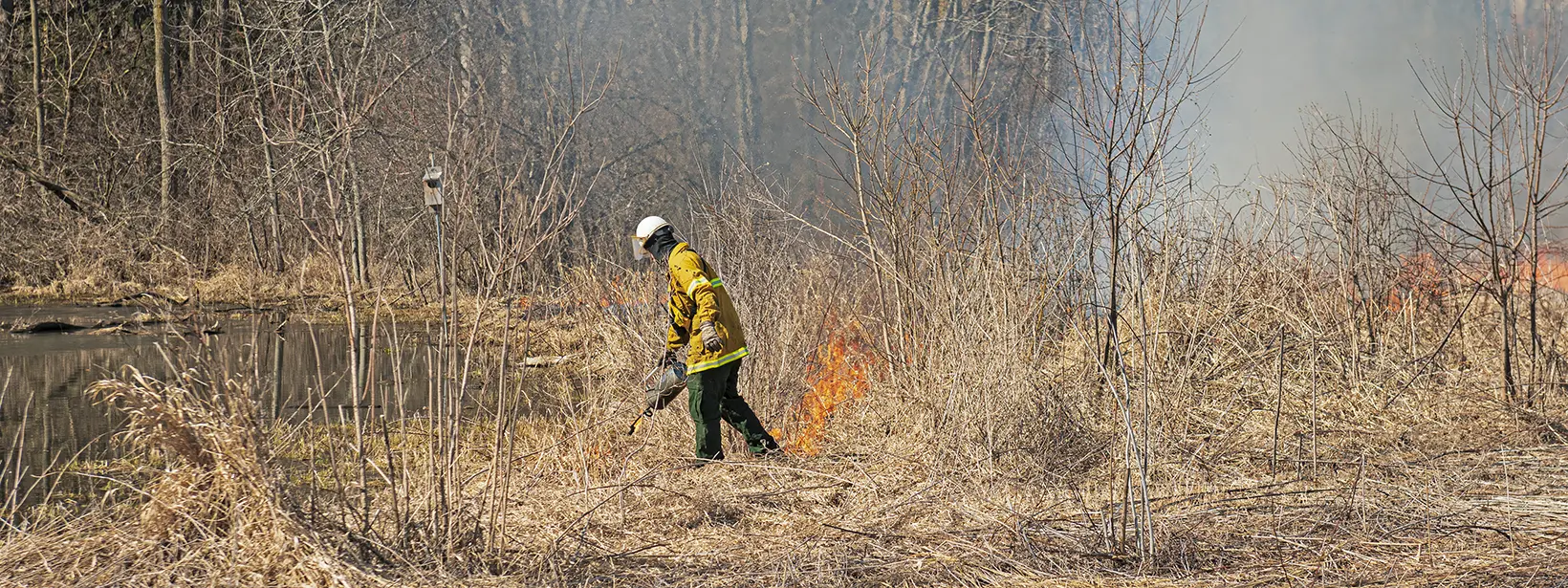The American Lung Association commissioned a report, written by PSE Healthy Energy, to answer the question: What does the current research say about the potential of prescribed fire to mitigate the increasing health and air quality risks from catastrophic wildfires, considering that prescribed fire involves air quality and health risks too? This 2022 report makes clear that wildfires are predicted to increase in the decades ahead, and prescribed fire can be used to mitigate the air quality and health impacts of catastrophic wildfires.
What Is Prescribed Fire?
Prescribed fire—also called prescribed burning or controlled burning—is the careful burning of areas vulnerable to wildfire risk under safe, controlled conditions to prevent dangerous buildup of "fuels” such as dead plants, grasses, leaf litter, sticks and trees that could potentially lead to a catastrophic fire.
Prescribed fires should only be implemented under planned, predictable circumstances where additional measures can be taken to minimize smoke exposures, including favorable weather conditions and wind patterns that will allow smoke to move away from sensitive areas (e.g., populated areas, hospitals, schools, roadways), in accordance with local and national air quality standards.
Key Findings
- Wildfire activity is predicted to increase in the decades ahead and expanded prescribed fire activity is needed to mitigate wildfire risk and associated impacts.
- Prescribed fire can be used to mitigate the negative air quality, health and safety impacts associated with large-scale wildfires.
- Existing research supports the notion that historical fire suppression policies are insufficient for longer-term fire management.
- While increasing prescribed fire activities may contribute to local air quality impacts, prescribed fire can be conducted in ways that minimize harmful smoke exposure potential.
- Expanded prescribed fire activities should be coupled with additional policies and best practices to mitigate potential harmful smoke exposure.
- Further research is needed to evaluate comparative risks of prescribed fire smoke and wildfire.
Additional measures to reduce public health impacts associated with wildfire and prescribed fire smoke exposure:
- Air quality surveillance coupled with public outreach and public notification systems;
- Indoor air filtration and clean air spaces;
- Provision and use of respiratory protective equipment for outdoor workers;
- Additional emergency planning and response, including protections for vulnerable populations.



